Billboards and lamp posts throughout central Madrid are adorned with posters displaying the curvaceous flesh of La Grande Odalisque (1814) by Jean-Auguste-Dominique Ingres (1780–1867). Advertising the exhibition ‘Ingres’ at the Prado, the image is a boon for the museum’s marketing department: arresting and alluring, and one of the great icons of French art, it has the power to entice visitors who might otherwise wonder what this artist has to offer. Locals can be forgiven for not knowing Ingres’s art well: he is not represented in any Spanish public collection and this is the first monographic exhibition devoted to him in Spain.
Another image that is being used for publicity is the portrait of the coquettish Comtesse d’Haussonville (1845), on loan from the Frick Collection. She is also an eye-catching beauty, but this time extravagantly clothed. Like La Grande Odalisque, it is an effective publicity image, because it has the familiar qualities of modern advertising photographs: flawless skin, smooth surfaces and soft lighting, creating a heightened reality that today would be down to digital enhancement, but then was achieved through the astonishing virtuosity of Ingres’s painting technique.
Look more closely at the Comtesse d’Haussonville, however, and something is not quite right in her anatomy. Her right arm does not seem to connect to her shoulder. Similarly, the elongated torso and limbs of La Grande Odalisque would make her a very strange creature indeed, if she were ever to stand to face us. These are more than idealised bodies; they are impossible bodies. The proportions and spatial relationships have been forced out of any relationship with reality. These distortions were derided by critics in Ingres’s day and have vexed commentators ever since. Ingres was regarded as the most accomplished painter of his age; many believed he compromised his talents by pursuing an ideal in art that was as likely to produce oddities as it was masterpieces, or works that paradoxically managed to be both.
His fame, then and now, largely rests on his portraiture and his female nudes. But as this exhibition demonstrates, his art was grounded on a rigorous academic training, and directed towards the classical tradition, the most elevated genre of history painting, and the precedents of the great masters of the Renaissance – notably his hero, Raphael. The awkwardness of many of his works was seen as a symptom of his excessive reverence for artistic models of the past, which he was unable to reconcile with the progressive currents of art at the time. The curators of the current exhibition do not dwell on these contradictions, presenting Ingres as a painter who self-consciously stood apart from contemporary movements or styles, developing a unique though controversial visual language.
The show has been organised in collaboration with the Musée du Louvre, which has loaned nearly half of the 70 paintings and drawings. Another large contingent comes from the Musée Ingres in Montauban, with others borrowed from French regional and international collections. The thematic hang explores Ingres’s motivations and strategies as he addressed different genres through his career. By grouping related works in this way, the exhibition succeeds in making some of the ‘bizarreries’ (as they were referred to by one contemporary critic) seem less bizarre, though many still remain unappealing to the modern eye.
Most of his neoclassical paintings, for example, now look contrived, severe and over-laboured. The exception is Oedipus and the Sphinx (1808), in which the naked hero dominates the pictorial space, the smoothness of his skin and flowing outline of his body prefiguring the sensuousness of Ingres’s female nudes.
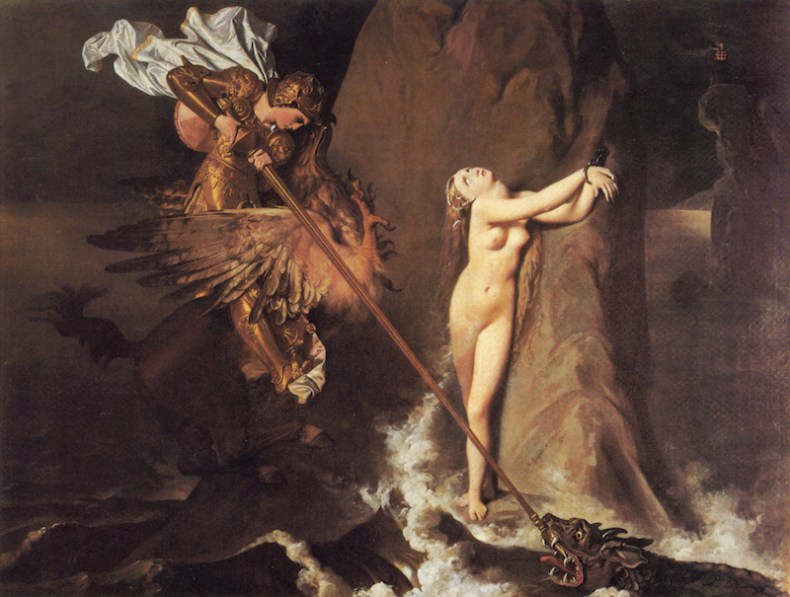
Ruggiero rescuing Angelica (1819), Jean-Auguste-Dominique Ingres. Musée du Louvre, Paris
A room of religious paintings shows how much Ingres was under the spell of Raphael. The monumental Christ among the Doctors (1862) is a technically masterful, but derivative work. The emotional restraint of these paintings contrasts with the extravagant medieval fantasy of Ruggiero rescuing Angelica (1819), an unsettling image that makes little attempt to conceal a subtext of sexual violence. A section dealing with his ‘troubadour’ paintings – small-scale works depicting anecdotal scenes from medieval or Renaissance history – reveals Ingres’s willingness to deviate from academically prescribed norms, but they are curiosities rather than triumphs.
The Ingres we discover here is not an embittered reactionary railing against a modern culture of which he does not feel a part. On the contrary, there is an undaunted optimism throughout his work, as he tried out new formulas or reworked old. Unconstrained by prevailing fashions in art, he had a restless ambition to reinvigorate and reinvent pictorial conventions. Although his output divided critical opinion, much of it had an enduring popular appeal, reaching wider audiences through the medium of print.
Although Ingres was a reluctant portraitist, he nevertheless accomplished some of his finest paintings in this genre. His male portraits, which were not subject to the same demands of idealisation as the female ones, invoke an imposing sense of their sitter’s presence by combining a scrupulous realism with a classical dignity. The standout example is the portrait of Louis-François Bertin (1832), who is portrayed as an uncompromising bulldog of a man, but nevertheless full of character and humanity, expressed through the precise description of Bertin’s ageing features.
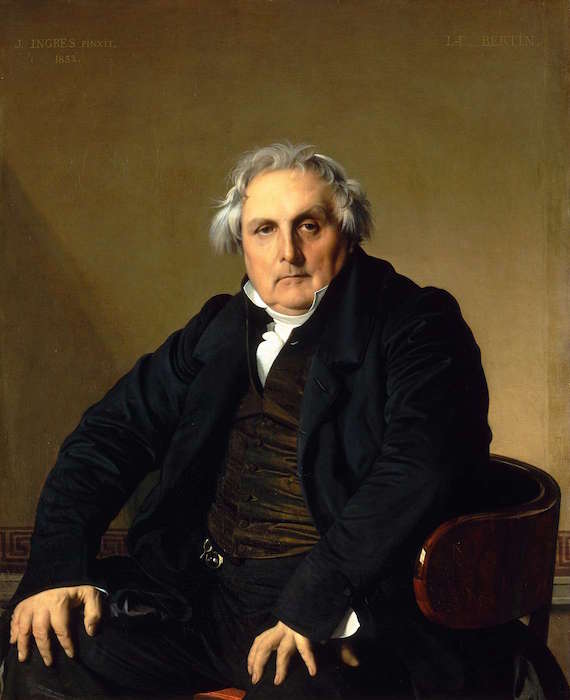
Louis-François Bertin (1832), Jean-Auguste-Dominique Ingres. Musée du Louvre, Paris
In common with the portraits, La Grande Odalisque is not burdened with narrative or moral content. It is an image about the pleasure of looking, an eroticism that is heightened by the nude’s unattainability: the impossibility of her beauty, the illusionary tactility of the materials that surround her, and an air of detachment created through the even tone of her skin, the economic use of shadow and the harmonised colours. Quite rightly it forms the centrepiece of the exhibition and is hailed as ‘the first great nude in the modern tradition’.
La Grande Odalisque, like all of Ingres’s most successful works, has a teasing quality of both drawing the spectator in but also demanding a distance. Previously, this tension might have been regarded as a consequence of the contradictions within Ingres’s art. But with this illuminating survey of his work, we discover a more authentic artist, who developed a distinctive aesthetic that remains influential to this day.
‘Ingres’ is at the Museo del Prado, Madrid, until 27 March.
From the March issue of Apollo: preview and subscribe here.
Unlimited access from just $16 every 3 months
Subscribe to get unlimited and exclusive access to the top art stories, interviews and exhibition reviews.

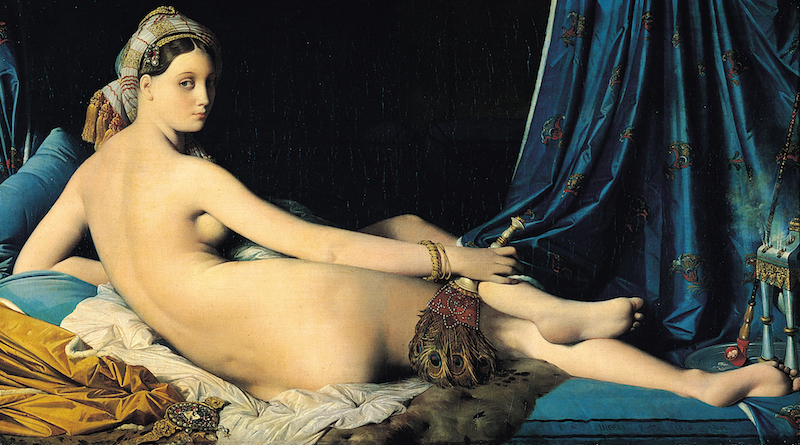
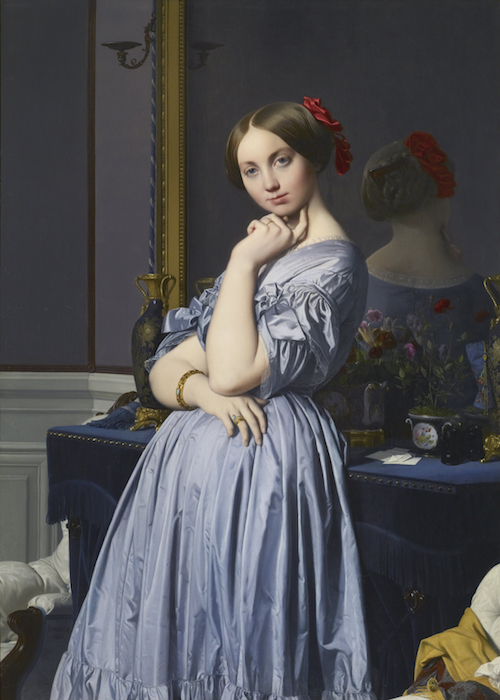
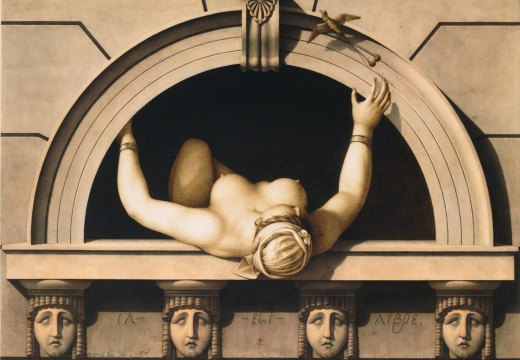
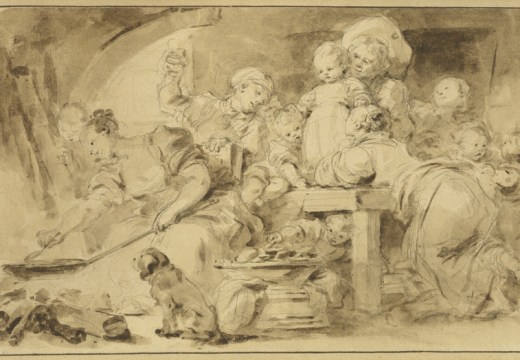
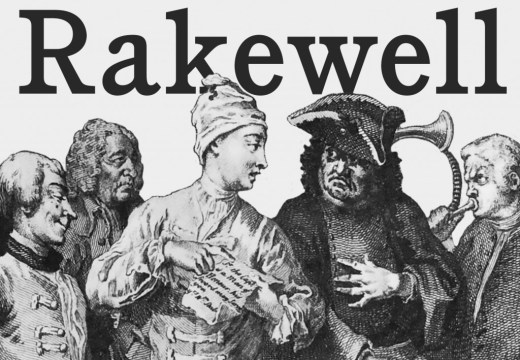









![Masterpiece [Re]discovery 2022. Photo: Ben Fisher Photography, courtesy of Masterpiece London](http://www.apollo-magazine.com/wp-content/uploads/2022/07/MPL2022_4263.jpg)
It’s time for the government of London to return to its rightful home